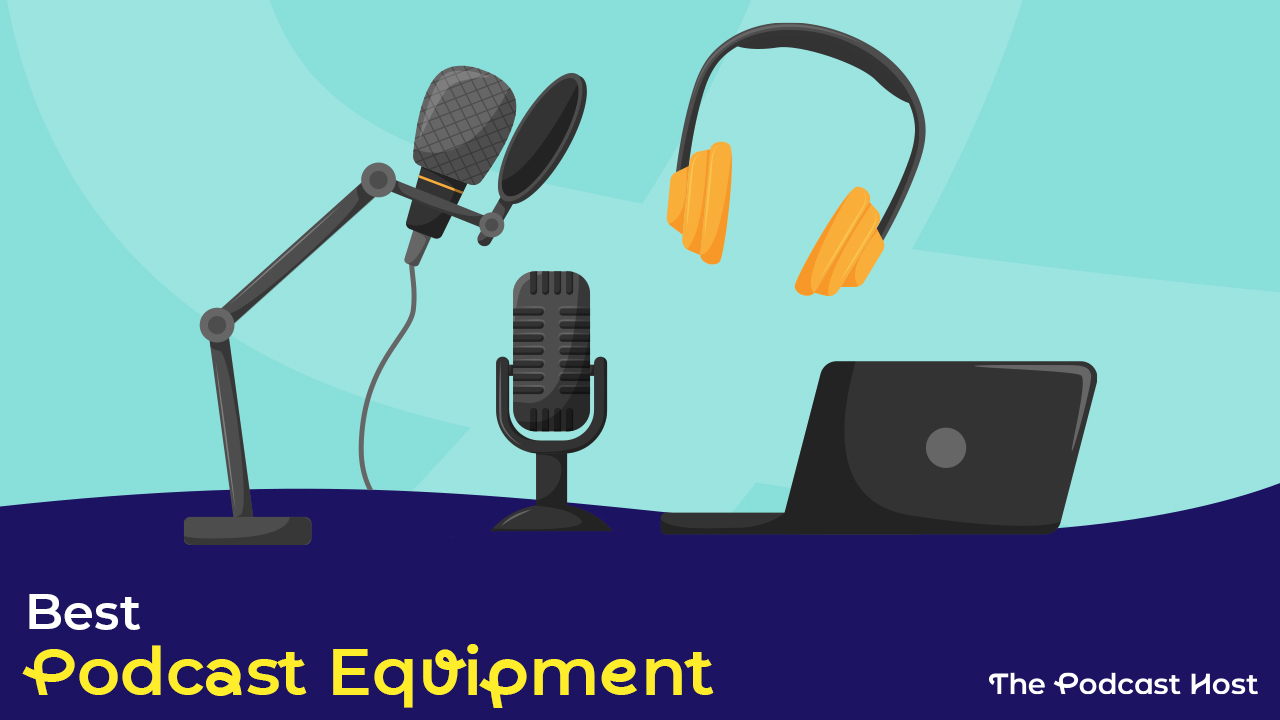JOBY Wavo Pod & Boom Arm Review: Do You Need a JOBY?
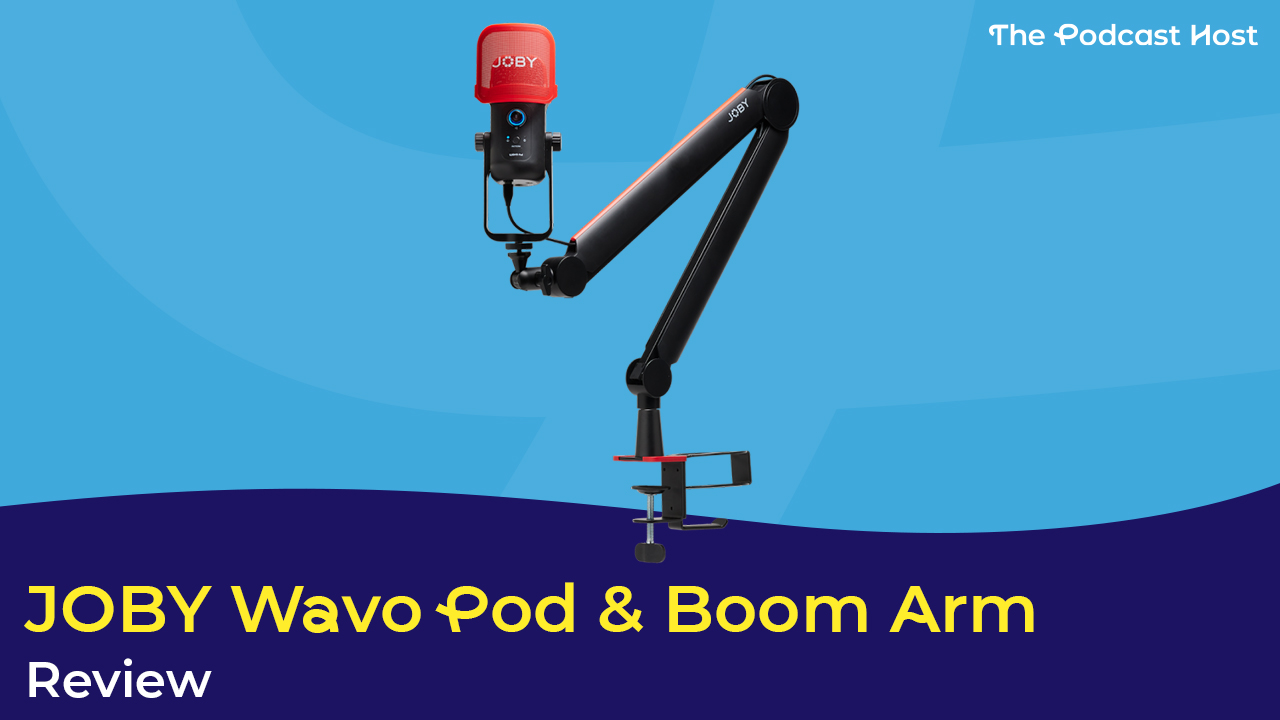
Okay, let me start by getting this out of the way, the name Joby is unfortunate if you’re a Scottish reader/podcaster, but we’re here to review a microphone.
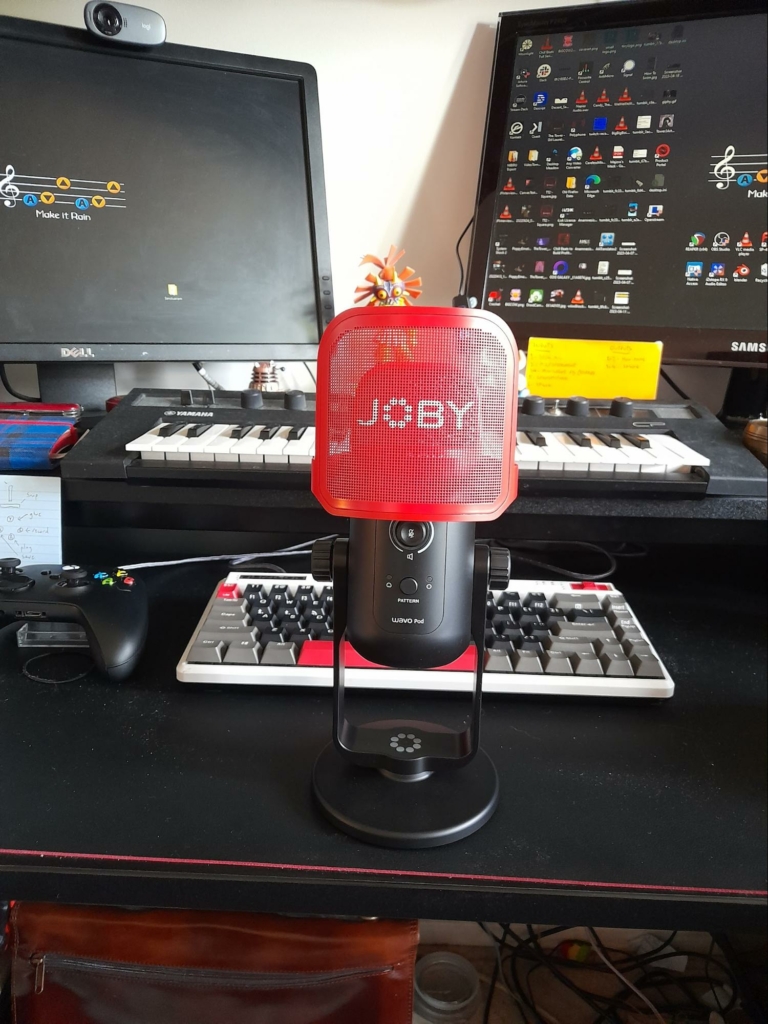
Who is the JOBY Wavo POD For?
The Joby (stop laughing) Wavo POD is a USB ‘plug and play’ condenser microphone aimed at streamers and podcasters. I happen to be at the intersection of both of those markets, so I was excited to try it out and see what it could do. It’s very affordable, retailing at under £100, and comes with a pop-shield and a handy desktop stand.

Editor’s Note
Thanks for reading our review of the Joby Wavo Pod mic and boom arm. Just a quick heads up that we use affiliate links on the site to products and services we think you’ll find interesting. We’d earn a small commission should you choose to buy through them (at no extra cost to yourself), and this helps support all the free content we put out. This will also never cloud our judgement when it comes to writing reviews – we’ll always give you our honest opinions, no matter what!
Look & Feel
The design of the Wavo POD is fantastic. It’s an adorably small microphone, making it perfect for sitting unobtrusively on a desktop. The button layout is clearly labelled (the dial also functioning as a mute button is a nice touch), and the screws for customising its setup (more on that later) are big, bulky and easy to twist.
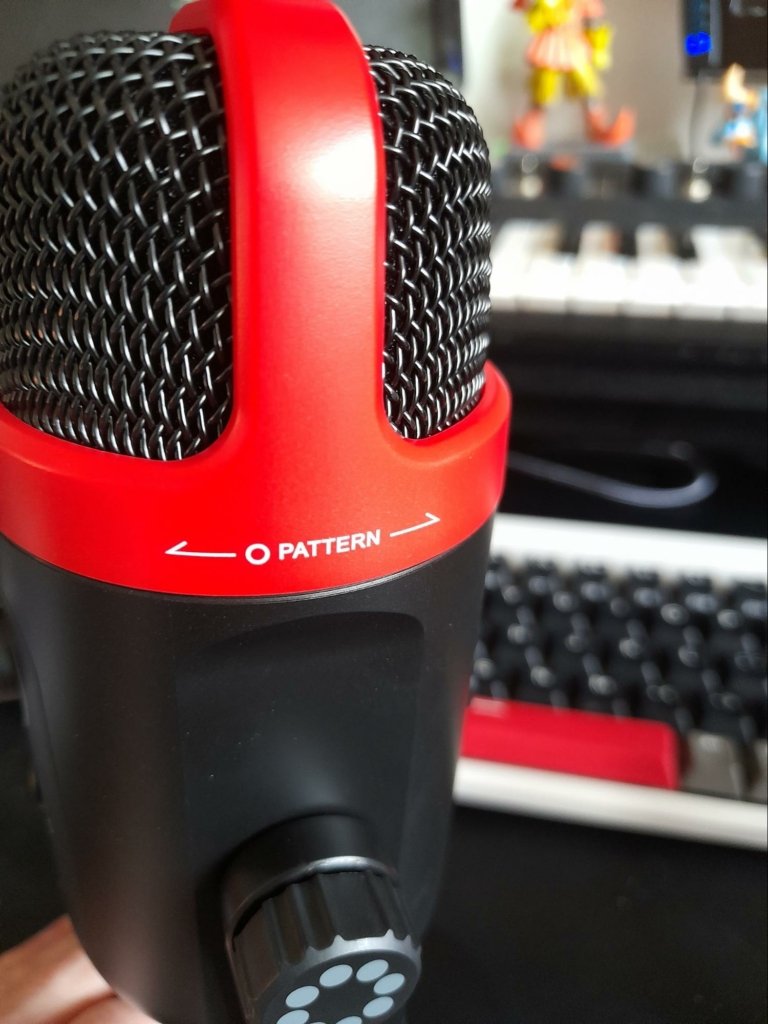
JOBY Wavo Pod Polar Patterns
The thing I really love about it is the labels on the mic head explaining the different mic patterns, with arrows pointing towards which parts of the microphone to speak into. This is a great little touch that demystifies the often complicated-sounding world of polar patterns.
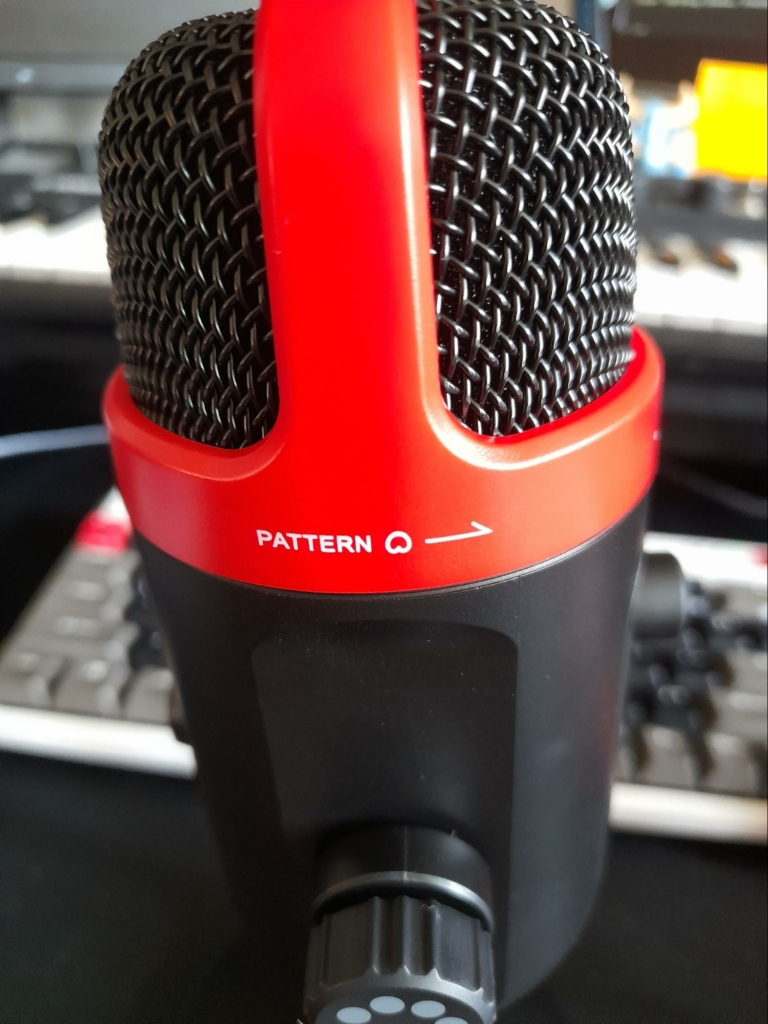
The Wavo POD features cardioid and omnidirectional polar patterns, making it an ideal starter mic for recording both voiceovers and interviews. The omnidirectional setting allows multiple people to be placed around the microphone and record clearly, which is great for group podcasting or ensemble audio dramas.
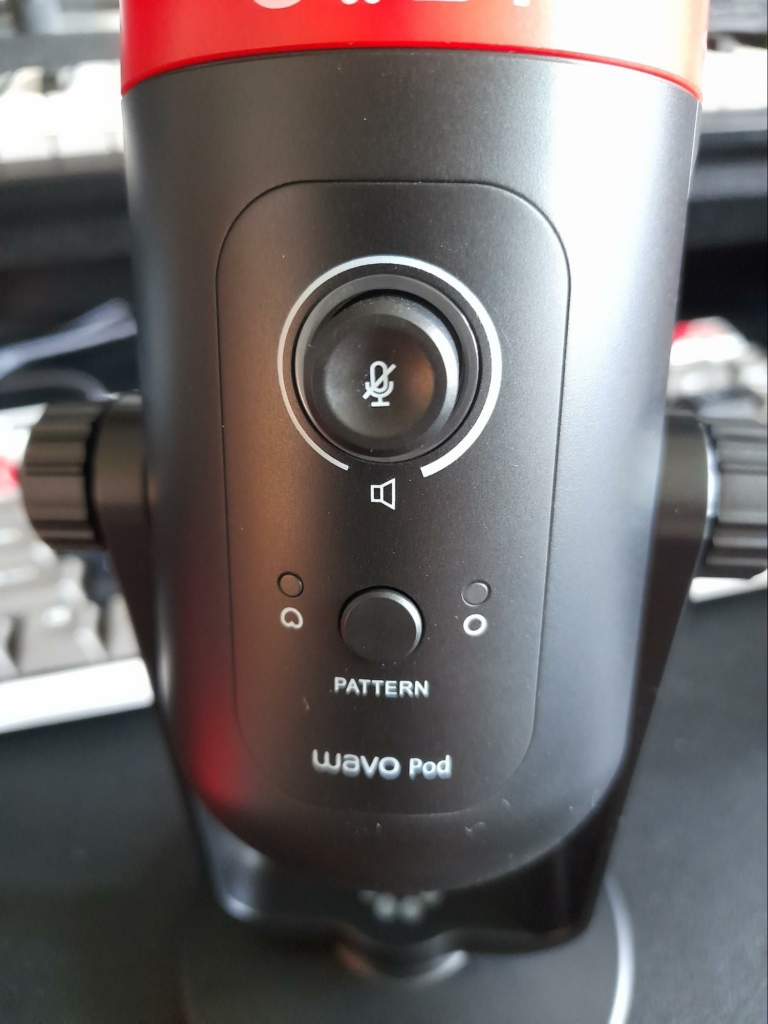
All of these features I could glean from just looking at the microphone. It’s intuitively designed and very sleek.
The POD came packaged with two long USB cables, a USB-C to USB-A for connecting to computers and a USB-C to USB-C for connecting to phones. It sounds slightly silly, but I really appreciated the length of these cables, as someone who is often frustrated by short cables that often come packaged with computer tech.
But this a piece of practice tech! You didn’t come here for me to tell you how pretty looks; you came here to find out how it sounds!
How Does the JOBY Wavo Pod Sound?
From a technical standpoint, the Wavo POD looks great: 48kHz sampling rate with 24-bit bit depth, 20Hz to 20kHz frequency response, everything a good mic should do!
When you plug the mic in, the ring light around the dial flashes a comforting blue. It took me a while to realise that this controls the output volume of the mic and not the gain. To adjust that, you hold the dial down for 3 seconds, at which point the ring light will turn purple. While this wasn’t immediately clear to me, it is in the instructions, so I can’t really fault them for that.
Output Issues
The instructions also say that you can use the mic to monitor output from your device (other people in the recording session, for instance), but for some reason, I couldn’t get the mic to work as an output device at all with my DAW, meaning I eventually unplugged my headphones from the mic and monitored with my usual Focusrite external audio interface.
Gain
The gain is quite sensitive, and the dial on the microphone also doesn’t have a minimum or maximum setting; it just infinitely turns, making it difficult to gauge how loud the signal actually is between the gain and the volume (and holding the button down for 3 seconds each time to switch between them). While for something like solo recording or streaming, this would be less of an issue as you can take as much time as you need beforehand to set up. But in something like a professional remote recording setting, where an engineer might be looking for specific information, this is not ideal.
The Wavo Boom Arm
The handling noise of the mic is also quite loud, especially when turning the dial and pressing the buttons, which led to me blasting my ears out with a loud button sound right before muting. There is also a lot of noise that comes up through the desk stand (like keyboard typing or ambient computer noise), which stands aren’t really supposed to do.
But that’s where a desk arm comes in handy (or…army?), and Joby were very kind to also provide one: the Wavo Boom Arm.
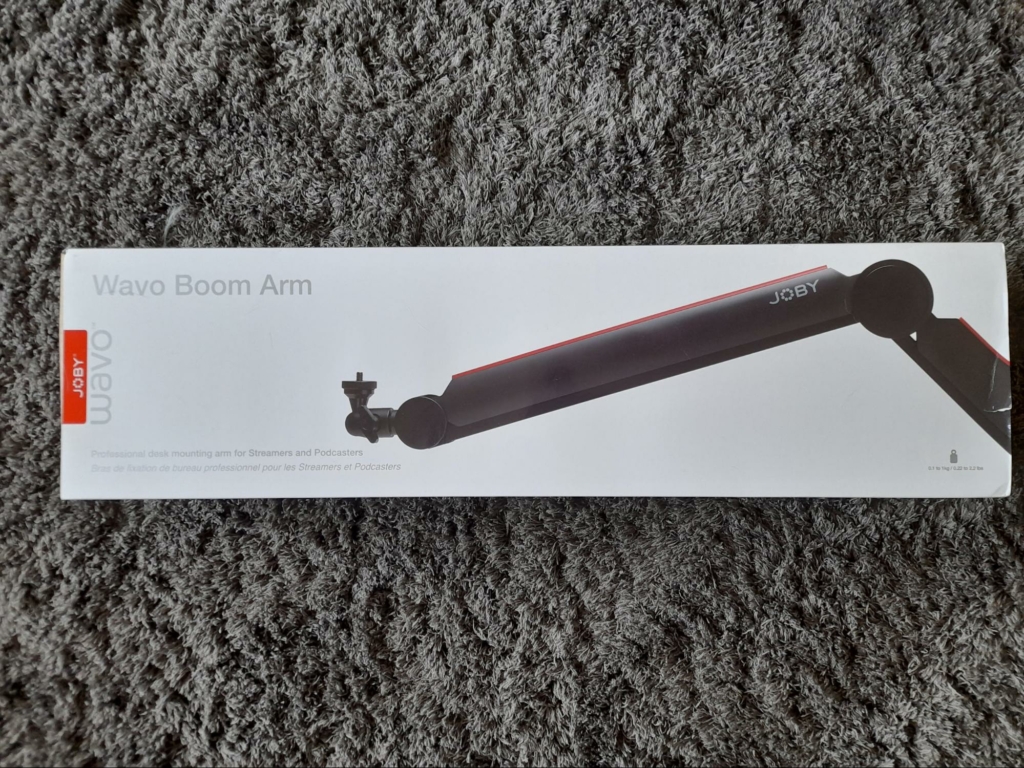
I was a little worried about this arm as the box was heavy, which is not necessarily what you want from a desk arm. However, it turned out that the majority of the heft was from the actual desk mount, which also features a handy-dandy beverage holder! I love this!
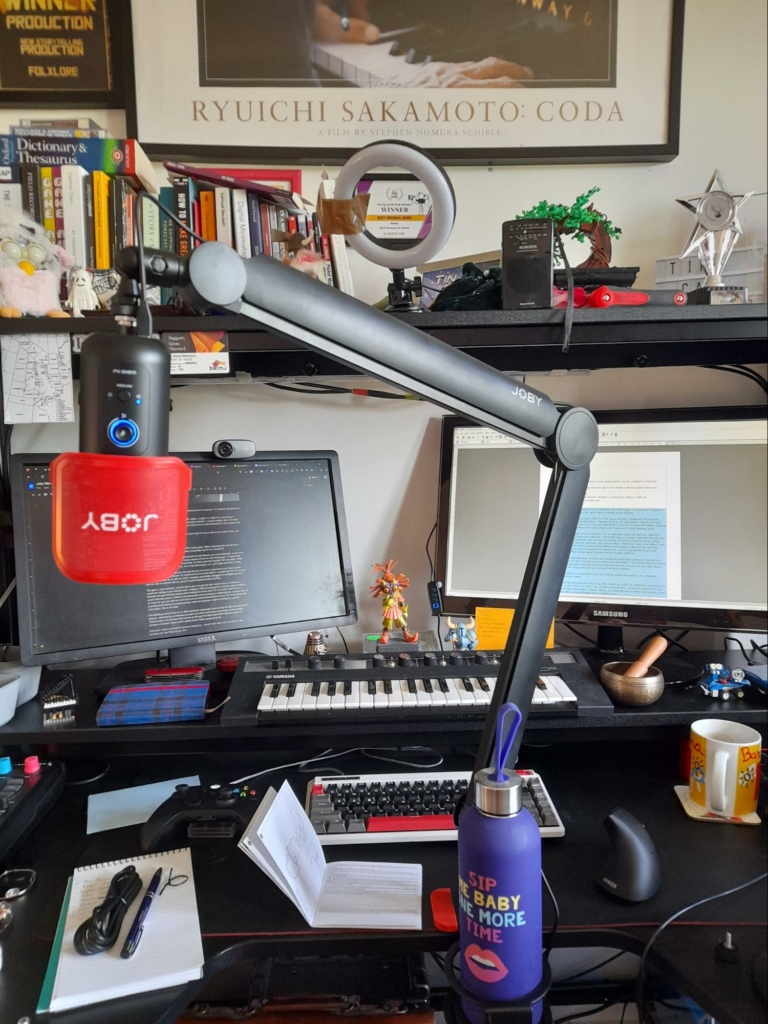
This boom arm is sturdy! It features something called ‘Tension Adjustment’, which locks into place whenever you move the arm. It’s lovely and solid and not at all loose like some of the more bog standard desk arms. It feels very well-engineered, and like once it’s in place, it’s not moving.
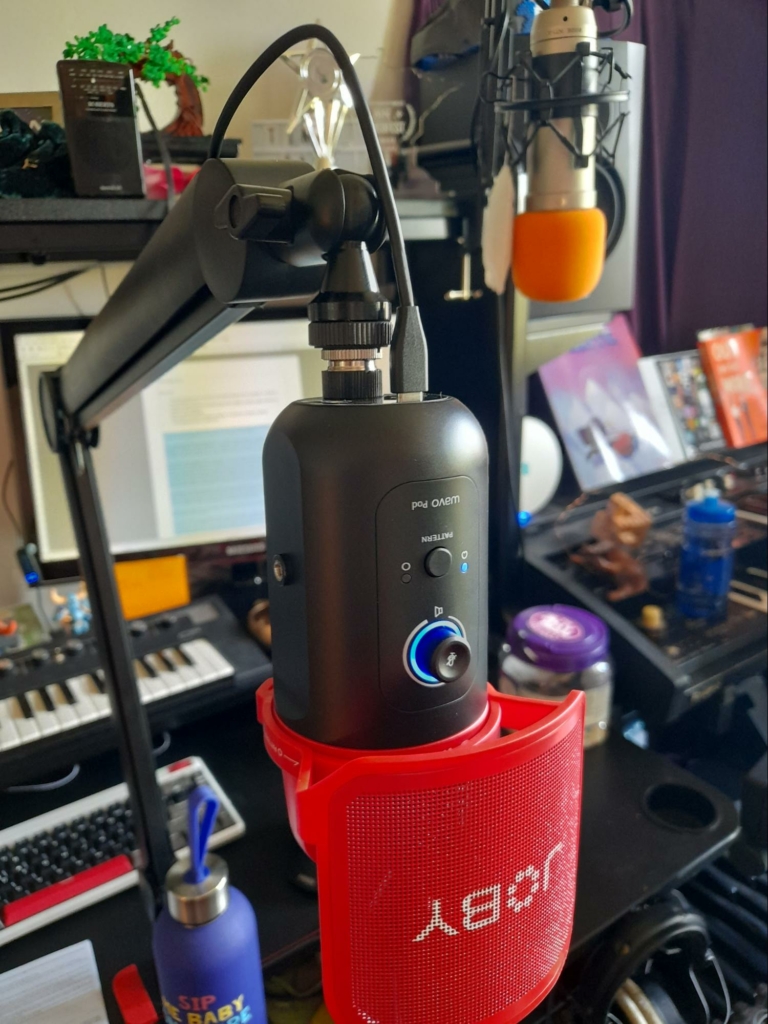
A really cool feature, and I mean this in all seriousness, is the clean cable management system of the Wavo Boom Arm. The tops of the arms slide off, allowing you to thread mic cables through them, leading to a very sleek, tidy mic setup (it even comes supplied with alternate coloured tops, so you can customise the arm’s look). This is much better than the standard wraparound system I have with my current desk setup.
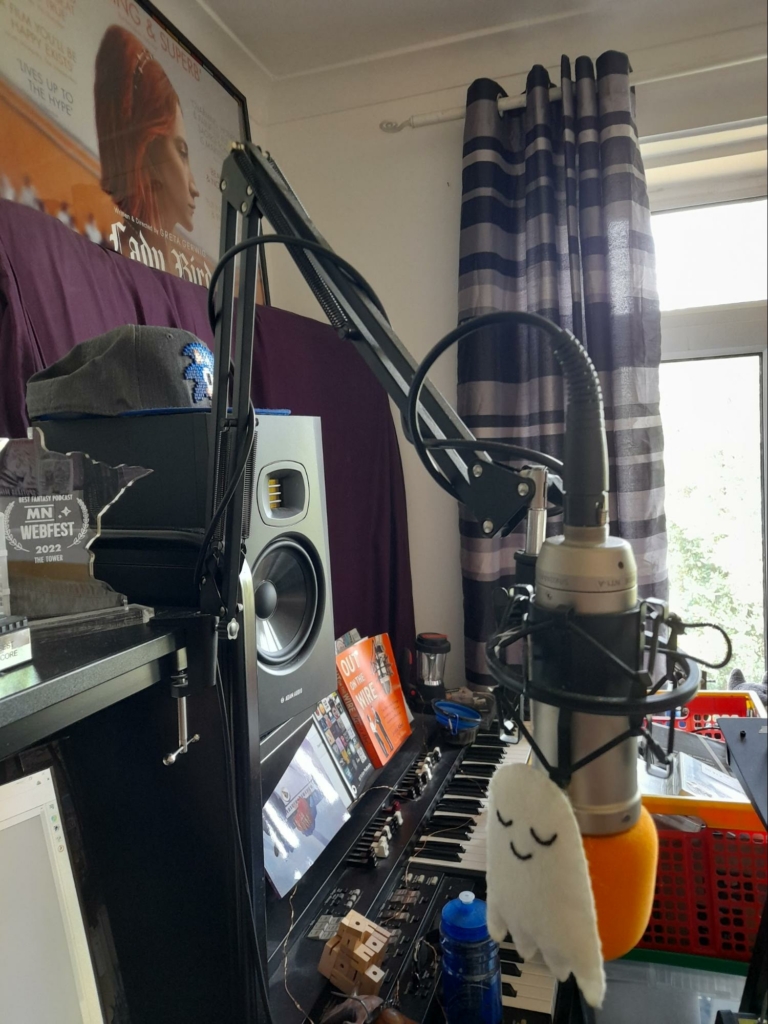
Attaching the mic is very straightforward. The areas on the mic that can be screwed in are all marked by a little circular pattern that looks a bit like the Youtube loading circle. The arm comes with a load of adapters for different screw sizes, and, while all the parts looked a little intimidating straight out the box, it was straightforward to figure out.
Closing Thoughts on the JOBY Wavo Pod
Alright, so who might need a Joby, then?
An obvious answer is anyone new to audio and looking for simplicity above all else. This could include streamers and solo podcasters, who, once they have their settings dialled in, can just talk and forget it’s even there.
It’s sleek, easy to set up and adjust, especially with the Boom Arm. If you’re podcasting on the go, this is a good choice due to its small size and a good alternative to using lav mics (which I think are noisy as heck, and people can’t seem to stop touching them during a session).
On the other hand, who might the Joby Wavo Pod not be such a good fit for?
I think if you’re a bit more serious about your sound and your practice (or, like me, you’re a nerd), I think you’re going to want something a bit more upmarket with extra control over the sound. The Wavo POD only has two polar patterns whereas the Blue Yeti, for around the same price, has four. There’s also no XLR output, and my inability to make it work as an output device, even after diving into my computer settings, is a problem. It could be a problem for you, too, if you’re serious about voice work or audio recording in general.
In closing, then, if you’re just starting out in audio or podcasting, there are few reasons not to add this mic to your “this could be the one” list. But if you already own a USB mic and are looking to build out your setup for more flexibility and control, check out our full podcast equipment guide, instead!

David Devereux is a writer, sound designer and musician based in Glasgow, Scotland. They primarily make audio dramas as Tin Can Audio but have also worked on non-fiction shows with Campside Media such as The Wire At 20 with HBO and Infamous with Sony Music Entertainment. They have also made music for Doctor Who: Redacted and the tabletop roleplaying game Upriver Downriver.
